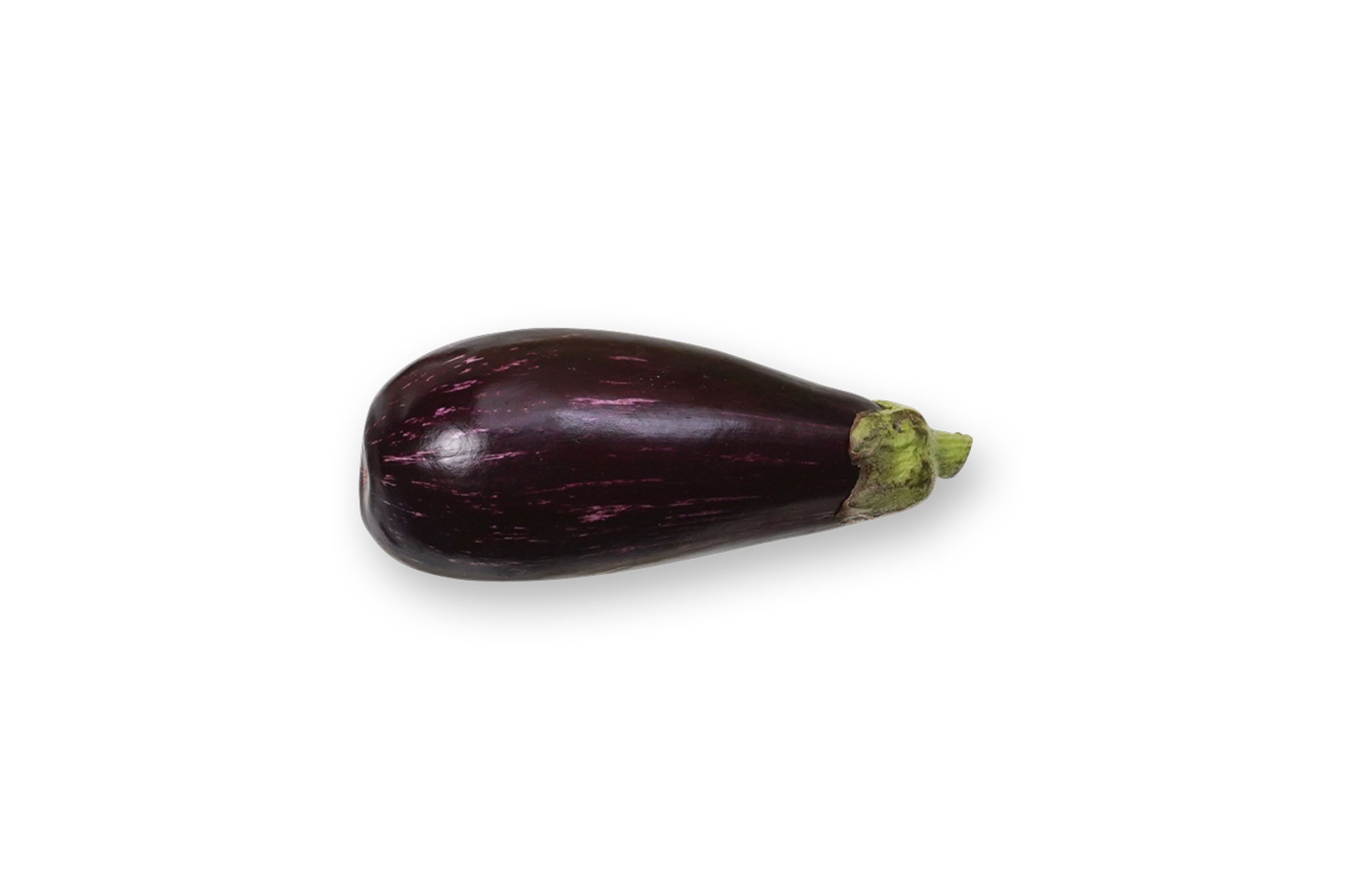Aubergine
A nightshade favourite
Intro
Aubergines are a core component of every-day cuisines around the world. Its mild flavour makes it a very versatile and popular ingredient, used a lot in Mediterranean and Middle Eastern cuisine.
The origin of the aubergine, its nutrition facts and how you can best prepare them, will be explained below!

What are aubergines?
Aubergines (Solanum melongena) ist a subtropical plant species from Asia. It belongs to the nightshade plant family. Similar plant relatives are tomatoes and peppers.
Aubergine (also known as Melanzani or egg fruit) can grow up to 20cm in length. They have a dark purple to black pigmentation in their peel. They are club-shaped and have a light, sponge-like flesh. These characteristics make an aubergine, which is botanically defined as a berry, particularly popular among vegetarians and vegans as a meat alternative.

Where do aubergines come from?
It is speculated that aubergines are originally from Asia, where they were cultivated more than 4000 years ago.
Which varieties are there?
Aubergines are extremely diverse, they can be oval shaped or round, slim or pear shaped. The peel can be a solid, deep colour or also graded/striped and light violet or white. The most popular varieties are:
- Antigua
-Colour: purple-white stripes, soft flesh
-Flavour: mild-fruity - Apple green
-Colour: green, firm flesh
-Flavour: : mild-spicy - Barbentane
-Colour: dark people, soft flesh
-Flavour: mild-fruity - Blaukönigin
-Farbe: blau-lila, weiches Fleisch
-Geschmack: mild-fruchtig - Black Beauty
-Beliebte Supermarktsorte
-Farbe: dunkelviolett, weiches Fleisch
-Geschmack: fruchtig, pilzartig - Little Spooky
-Farbe: weißes, weiches Fleisch
-Geschmack: aromatisch, pilzartig - Orange Prince
-Farbe:Grün-orange, festes Fleisch
-Geschmack: würzig (wird schnell bitter) - Udmalbet
-Weiß-dunkelviolett gestreift, nicht ganz fest
-Geschmack: fruchtig (wird schnell bitter) - Violetta di Firenze
-Farbe: weiß-hellviolett, weich
-Geschmack: fruchtig-mild
When are aubergines in season?
August-October
Our tips for how you can enjoy aubergines:
Oven bakes, on a BBQ, stuffed aubergine, in a curry or ratatouille or as a cold dip!
Aubergine Nutrition Facts per 100g:
| Typical Values | 100g |
|---|---|
| Calories | 25 |
| Fat | 0.2g |
| Carbohydrates | 6.5g |
| Fibre | 3g |
| Sugar | 3.5g |
| Protein | 1g |
Nutrients found in aubergine:
Vitamins: Beta-Carotene, B-Vitamins, Vitamin C, Vitamin E, folic acid
Minerals: Sodium, Potassium, Calcium, Magnesium, Phosphate, Iron, Zinc
Secondary plant substances: Anthocyanins & phenolic acid

